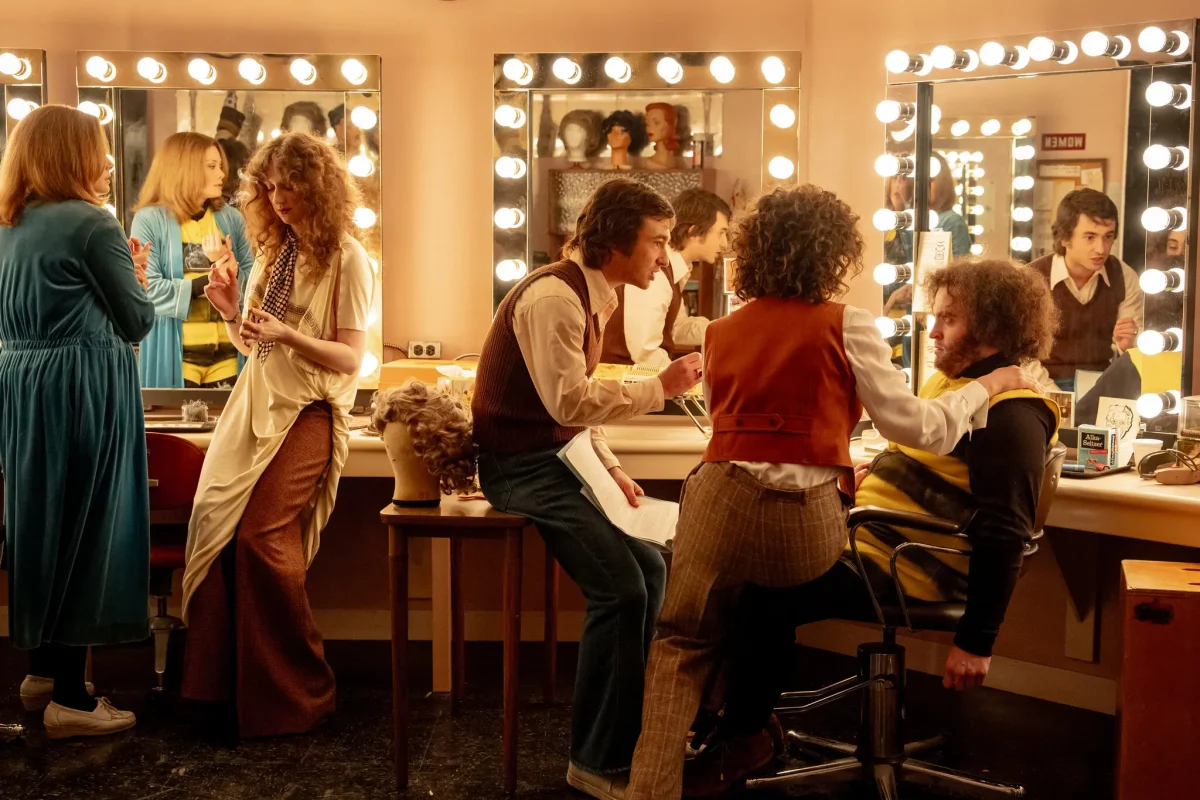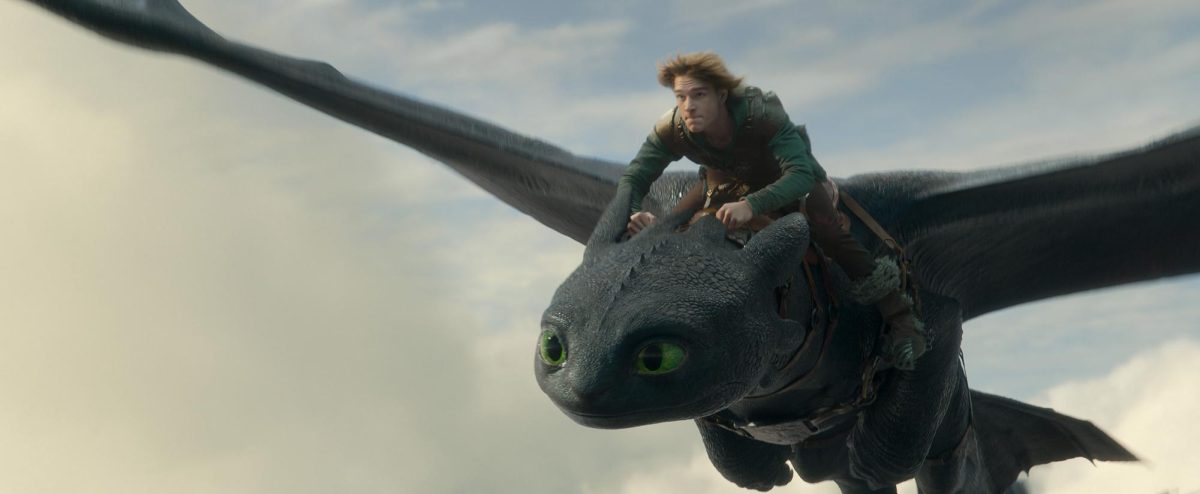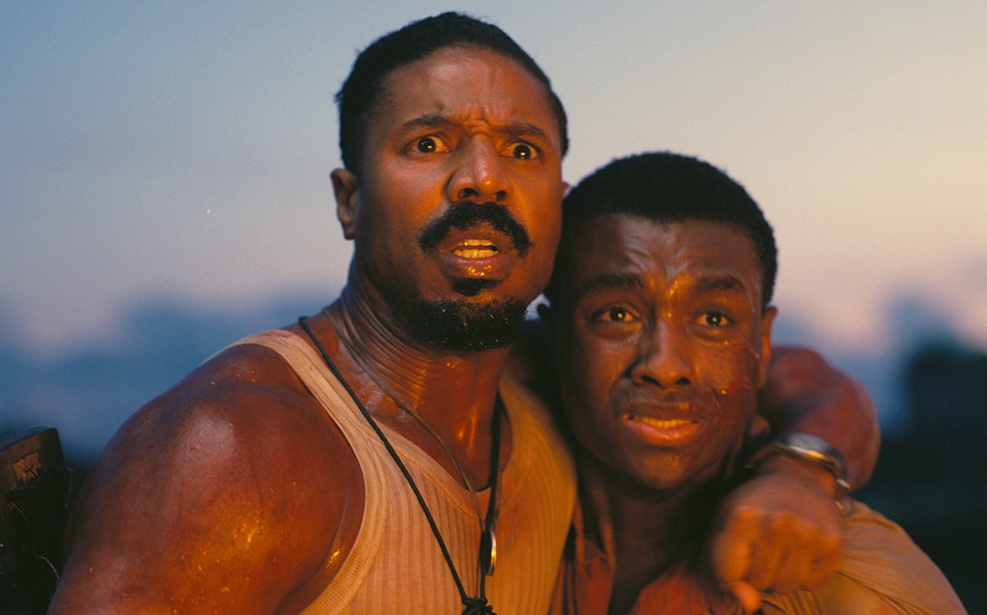4.5 out of 5.0 stars
It was 10 p.m. Oct. 11, 1975.. 90 minutes left until the pilot episode of “Saturday Night Live” airs. Director Jason Reitman’s “Saturday Night,” released in theaters Oct. 11, 2024, dives into the never-before-told origin story of a show built to fail, yet destined to succeed.
The film follows an ensemble of over 30 characters, which is an extensive range of people to cover in 109 minutes considering there are 10 minutes of credits and a bit of the live show. Yet it’s hard to imagine a movie about Saturday Night Live being made differently. The show has only worked in the past 50 years because of the hundreds of people who come together every week to get the show ready in only a matter of days. Naturally, a movie about the show’s first production will be full of chaos, and the script’s tone is right on. The characters question their life choices while still being funny, which is helpful for a movie about comedians.
The score was composed live during the filming by Jon Batiste — who also plays the musical guest, Billy Preston — and brings the movie’s tension to life. Everything on set is breaking down, half of the cast and crew are quitting or threatening to quit and executives don’t even want the show to air. The music is the element that advances that action through the plot. The conflict could appear meaningless, as everyone knows the show will succeed, so the musical tension built into the story is necessary for it to work.
Gabriel LaBelle beautifully leads the ensemble as Lorne Michaels, the man who had this crazy idea for a show and started it all. Today, he is one of the most powerful people in show business. But in 1975, he was just a funny guy with some connections and a dream — not necessarily at his prime, but on the brink of his idea coming to life. The movie perfectly illustrates the gift he has to make this show a reality. LaBelle being younger than Michaels was works in LaBelle’s favor — the more he exhibits a lack of risk aversion, the better.
Chevy Chase, played by the excellent Cory Michael Smith, gets great moments to shine as a star on the rise. The same goes for Dylan O’Brien, who is a great surprise as Dan Aykroyd. He doesn’t necessarily look the part, but he nails the voice and the mannerisms. The chemistry among the whole cast jumps off the screen. It’s not an easy task to impersonate the Not Ready For Prime Time Players — the title given to the show’s original cast — but the joy that everyone brings to the table is immaculate. It feels like they belong in that space together.
The cinematography is what truly captures the impressive acting and casting. The wonderful choice to shoot in 16mm only makes it all the more realistic for its time. There is also this sensation from classic films — think Orson Welles in “The Third Man” — when a famous actor enters the screen and the shot lingers on them just a second longer. The film does just that when Rachel Sennott comes on screen, and it works well for her character’s introduction and for establishing the actress as a star.
The only strange aspect of the film was the lack of drugs — or lack of overt drugs. It paints John Belushi (Matt Wood) as an addict, which he was. But it is a known fact that he wasn’t the only person in the building using in real life. In “Live From New York” by James Andrew Miller and Tom Shales — the oral story of the history of SNL told through interviews with its stars, writers and guests — many people recount how substance abuse was frequent on the SNL floor. It helps with setting Belushi’s character up as an outsider, but it’s not as if the rest of the cast and crew were just casually smoking. It seems a bit unrealistic to not lean into that more, especially considering how most of the movie’s storyline aligns with stories told in the book.
Other parts in the movie also felt off, but these moments end up being there to set up later climaxes, like pieces slowly falling into place. For example, Jim Henson — Nicholas Braun, who also plays Andy Kaufman — is a punching bag for most of the movie, and it doesn’t sit right to see the man who made The Muppets in that position. Yet, he has a great scene toward the final section that shows how he’s just in the wrong place at the wrong time. It’s in the subtext that his moment will come eventually. Generally, the more someone knows about that era the more space there is for subtext. One of the most beautiful scenes in the movie occurs on Rockefeller Center’s ice rink between Belushi and Gilda Radner (Ella Hunt) — the cast members who passed away in the 80s. It’s a nice moment, but there would be more space for a deeper connection with the scene if the audience knows how meaningful it is to have these specific characters talking about the future.
Lorne Michaels often says “The show doesn’t go on because it’s ready, it goes on because it’s 11:30.” “Saturday Night” is a story about people who really love something — whether that’s comedy, performing, producing or television in general — coming together to try to get it done on time.
Whether the audience goes in knowing who these people are or not, they leave knowing the names and stories of a group of funny 20-year-olds who got together and made timeless TV history in a single night.




















